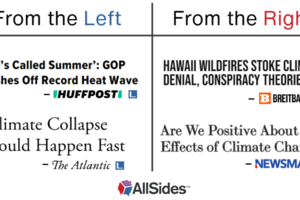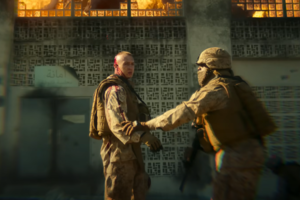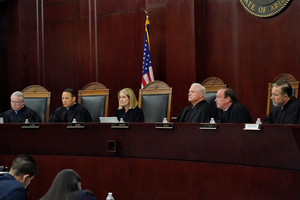Black Lives, Blue Lives: Truth on Both Sides Part II

Police racism and brutality are topics that have people drawing sides. Part I of this series describes how many of us tend to focus on one aspect of the problem without considering, or sometimes even hearing, opposing points.
Often the information we gather, whether from the media or from our community, comes with a bias that doesn’t give us the opportunity to see the big picture.
For instance, a typical argument about police bias might go as follows:
“The treatment of blacks by police is unacceptably aggressive and violent.”
“No. The vast majority of police officers perform a dangerous and difficult job well. The media hypes police brutality against blacks more than the problem of inner-city crime.”
The fact is, both claims have merit. Acknowledging one doesn’t diminish the other.
This series expands upon my Christian Science Monitor article and investigates the truth and the bias of each side of this argument.
Are police overly hostile?
It depends who you ask.
“Let’s be clear, there is no possible justification for [the Dallas police shooting],”said President Obama at the memorial for slain Dallas officers. “Our police have an extraordinarily difficult job and the vast majority of them do their job in outstanding fashion.”
There’s no doubt that the cold-blooded murder of police officers is indefensible. Yet some would point out that resentment has been building against police in America. The increased use of body cameras, dash cams, and phone videos has displayed many graphic examples of abusive and excessively violent police behavior.
A few victims of police brutality listed in a Baltimore Sun article include a 15-year-old boy riding a dirt bike, a 26-year-old pregnant accountant who had witnessed a beating, a 50-year-old woman selling church raffle tickets, a 65-year-old church deacon rolling a cigarette and an 87-year-old grandmother aiding her wounded grandson. A story by The Week exposes many occasions when police have been called to help someone in distress and ended up killing them instead.
Critics of police complain that there aren’t adequate repercussions for officers who perpetrate violence. As chronicled in many newspaper reports, U.S. police departments have paid out hundreds of millions of dollars annually in settlements and awards to victims of police abuse. But that money is generally paid by taxpayers, not law enforcement. And even when charged with senseless battery or murder while on duty, officers are typically protected from criminal charges and jail time by a doctrine of qualified immunity.
Defenders of the police emphasize that most officers perform their job justly and appropriately. But, as stated by the Libertarian Party, “when rogue cop after rogue cop gets off scot-free after using excessive force and changes are not made, and consequences are not felt, it causes this horrible tension we are feeling today.”
Is police brutality a racial issue?
Depending who you’re listening to, the story may sound very different.
Wall Street Journal writer Heather MacDonald doesn’t believe blacks are unjustly victimized. In “The Myths of Black Lives Matter,” MacDonald contends that it’s policemen who should be fearful of blacks. She points out that police officers are killed by blacks at a rate of 2.5 times higher than the rate at which blacks are killed by police. MacDonald also asserts that whites should be more worried about the police than blacks: 12% of all white and Hispanic homicide deaths were from police shootings. But because blacks die from homicide at a much higher rate, only 4% of black homicide deaths are caused by police shooting.
These statistics are all valid and deserve thoughtful reflection. Defenders of police contend that groups such as Black Lives Matter disregard the extent of black-on-black violence that police face.
An example is Franchesca Ramsey, who defends Black Lives Matter in an MTV Facebook video. “Black on black crime isn’t a thing,” she states. Ramsey points out that people tend to murder others from their own communities, and 84% of white murders are committed by whites.
This fact is accurate. However Ramsey doesn’t take into account that, according to the US Department of Justice, blacks are almost 8 times more likely to commit murder than whites, and 6 times higher to be a victim of homicide than whites. The Baltimore Sun reported that, “blood was shed in Baltimore at an unprecedented pace in 2015, with mostly young, black men shot to death [by other blacks] in a near-daily crush of violence.”
Heather MacDonald has a valid point that, if blacks are in more altercations with police, they are more likely to be victims of police shootings. On the other hand, others say the amount of violent crime perpetrated by blacks is irrelevant to the conversation. Franchesca Ramsey is also right when she says that focusing on black-on-black crime can divert us from the separate problem of police racism and brutality. Black men represent just 6 percent of the U.S. population, but made up nearly 40 percent of those who were killed while unarmed. As she states, if police aren’t doing their job to “protect and serve all communities, we need to reassess and find solutions.”
How the media affects what we think
Violent crime and police brutality are issues that should concern everyone. But the way in which these issues are depicted by social and mass media often divides us and makes us jump to the defensive.
Some point out that police brutality against whites has been underrepresented in the media. For example, when an unarmed white teen was recently killed by police there was barely a ripple in the news. The other side complains that demonstrations by black organizations against inner-city violence tend to be less publicized by the media than rallies by blacks against the police.
These claims are both true, and are important because what we see in the news colors how we perceive the problem.
A George Washington University report found that personal experience had mixed effects regarding overall satisfaction with the police, but “repeated exposure to media reports on police abuse was found to be a strong predictor of perceptions of police misconduct, racialized policing, and support for reforms.” The report states that, “the role of the media has not received the attention it deserves from policing scholars; it may be an important dimension of any comprehensive explanatory framework of police-citizen relations.”
Police brutality is a serious problem that requires consequences and accountability from offending officers. Poor, urban communities, where innocent people are most vulnerable to both crime and police brutality, are in vital need of a police force they can trust. However, police are most often faced with dangerous criminals and perilous situations in minority communities. Both sides need to acknowledge that circumstances have left many blacks as well as police officers paranoid and suspicious.
Divisive arguments fail to show us the full picture. Finding a resolution to these complicated issues is only possible when we’re willing to acknowledge multiple truths.
Beth Ballentine is a freelance political writer and "equal opportunity political critic." When not writing political commentary, she teaches middle school drama and has authored many plays for children and young adults. Send her your thoughts at Contact@freetothinkblog.com. Her Free to Think series appears here: http://freetothinkblog.com/ or on Facebook.

April 17th, 2024

April 17th, 2024

April 16th, 2024

April 15th, 2024